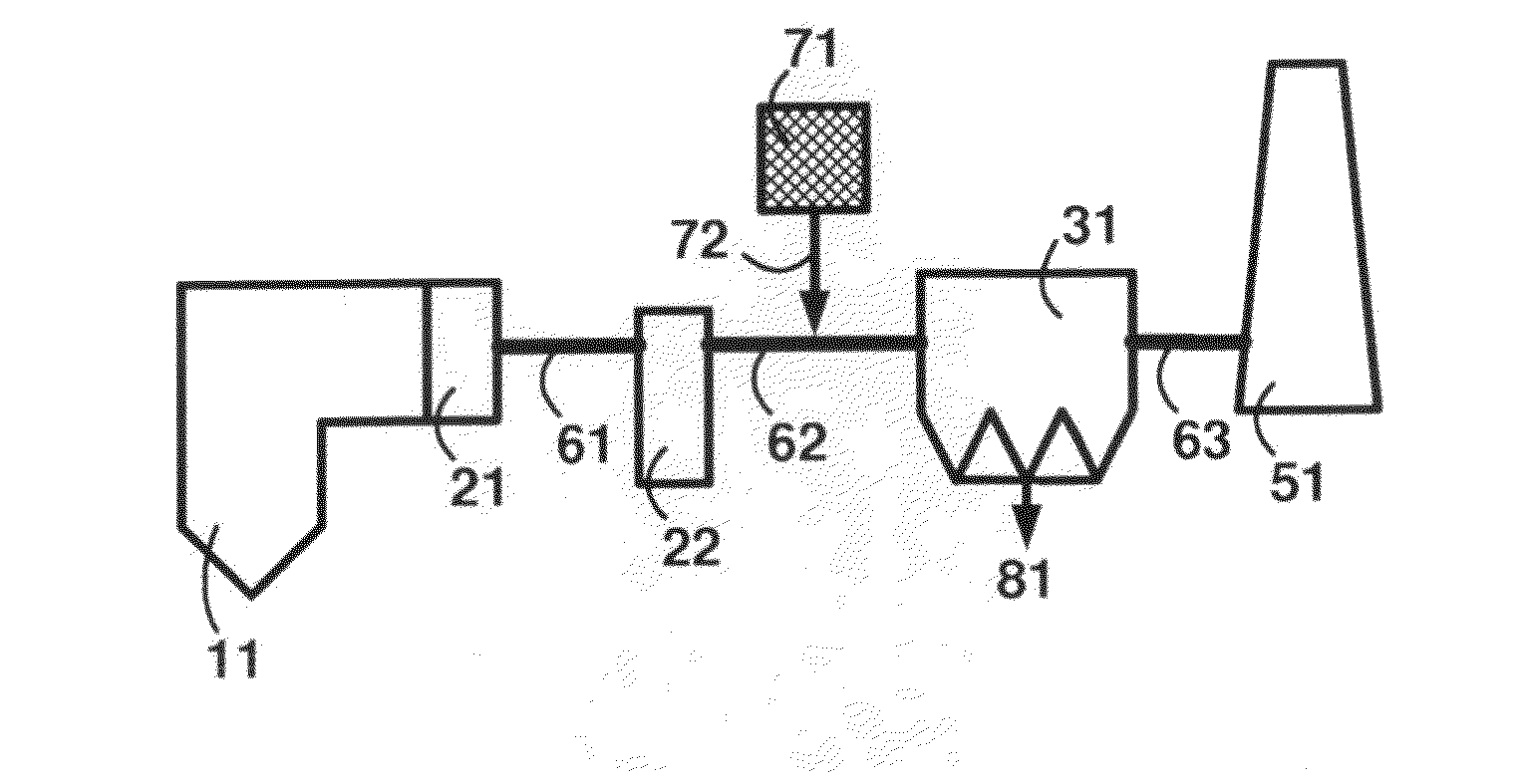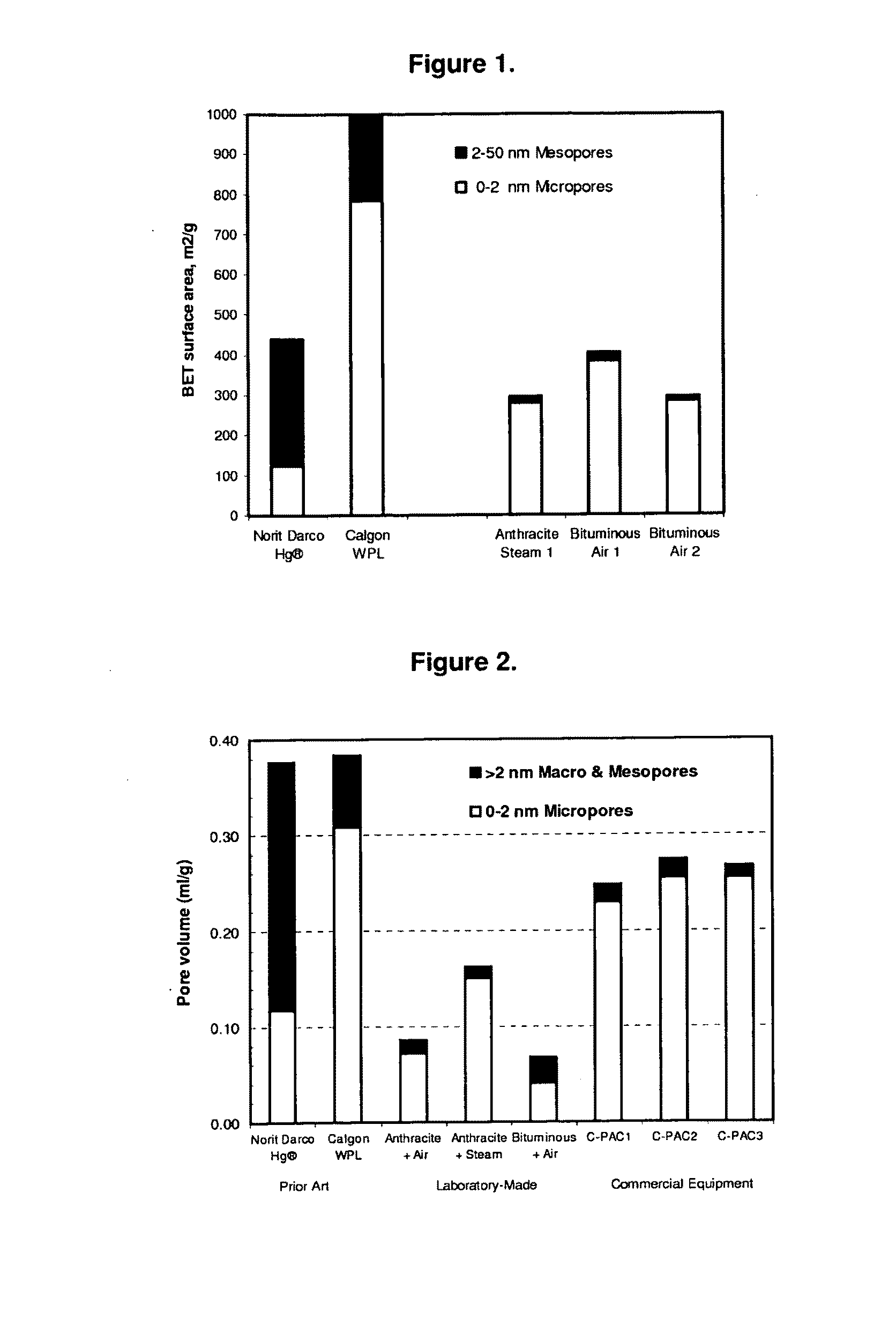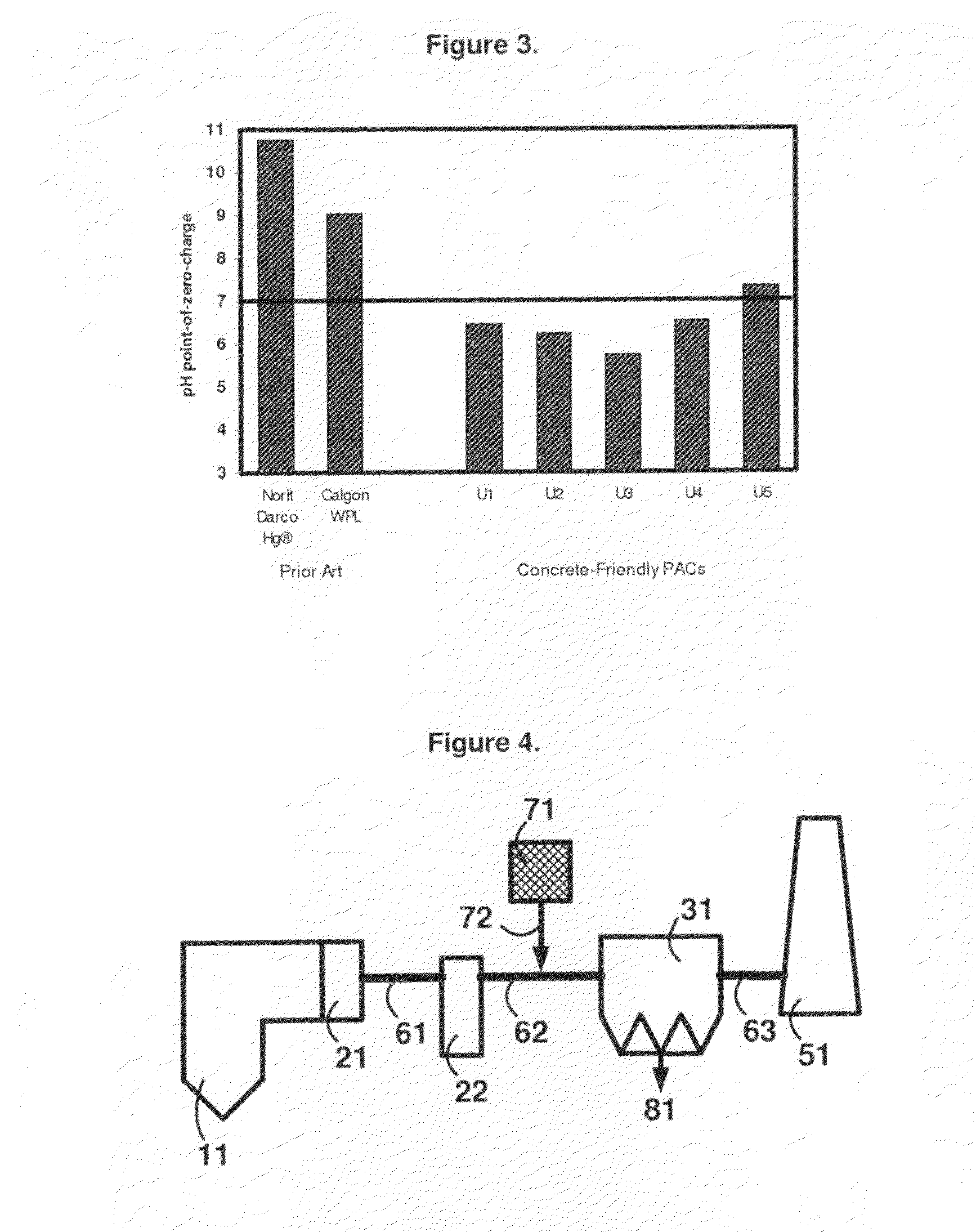Compositions and methods to sequester flue gas mercury in concrete
a technology of flue gas mercury and concrete, which is applied in the direction of climate sustainability, chemical/physical processes, solid waste management, etc., can solve the problems of ash not being sold for its highest value, replacement of cement in concrete, and all of these benefits are lost, so as to reduce adsorption, reduce adsorption, and prevent excessive combustion of the product
- Summary
- Abstract
- Description
- Claims
- Application Information
AI Technical Summary
Benefits of technology
Problems solved by technology
Method used
Image
Examples
example 1
Novel Concrete-Friendly Carbons
[0100]Powdered activated carbon mercury sorbents with low ABIs for compositions of this invention were produced in the laboratory using the customary two-step devolatilization / carbonization and activation sequence. They were produced in a laboratory fluidized bed reactor, rather than a kiln or furnace, but those skilled in the art will recognize that similar materials could be produced in a kiln and furnace or multi-hearth furnace by modifying the pertinent equipment temperatures, residence times, and other relevant processing parameters. The various coal feedstocks came from coal suppliers and The Pennsylvania State University's Coal Sample Bank, the latter samples denoted PSOC.
[0101]First, all of the different coal feedstock samples were was crushed and sized. Materials between 50-mesh size and 100-mesh size (U.S. Standard Series sieves) were then gradually devolatilized and carbonized in a hot, inert atmosphere (N2) in the fluidized bed reactor. The...
example 2
Air-Entrained Concretes with Prior Art and Novel PACs
[0111]Fly-ash-containing concretes with either a prior-art mercury sorbent PAC, or a PAC of this invention, were produced to examine their relative resulting air entrainment. The Norit Darco® Hg prior-art sorbent, with an ABI around 120, was compared to PAC 2 from Example 1, an air-activated carbon with an ABI of 7.
[0112]Concrete samples of four different compositions were produced. Each contained portland cement, fly ash replacing a typical 20% of the cement, sand, aggregate, water, and a standard amount of a common air-entraining admixture, Darex® II (W.R. Grace, Cambridge, Mass.). The fly ash came from We Energies' Pleasant Prairie power plant, a representative utility mercury control site.
[0113]One of the concrete formulations contained no mercury PAC. Another of the compositions contained Darco® Hg mixed in with respect to the fly ash at 1.0 weight-percent, a level representing a modest mercury sorbent injection rate at a pow...
example 3
Additional PACs
[0119]Additional PACs were produced according to methods of Example 1, all with steam activation. The relevant parameters and results are provided in Table 3 below.
[0120]Many different anthracites can be used to produce concrete-friendly mercury sorbents with traditional steam activation. The feedstocks for PACs 3 and 4 from Example 1, for example, were from different sources. The former came from the Jedo Coal Company and the latter, from The Pennsylvania State University Coal Sample Bank.
TABLE 3HgRefSourcePrecursorRemovalYieldABI3Jedo Coal Co.Anthracite69%74%44PSU PSOC 1558Anthracite58%69%108ConsolidationBitum-LV30%75%1Coal-Buchanan9Thompson Bros. MiningBitum-HV80%27%80
[0121]It is also possible to make a concrete-compatible mercury sorbent from a bituminous coal without having to resort to air activation if the feedstock has sufficiently-low volatility. PAC 8 had a very low ABI, but it was not fully activated and its mercury removal rate was low. It is envisioned th...
PUM
| Property | Measurement | Unit |
|---|---|---|
| widths | aaaaa | aaaaa |
| widths | aaaaa | aaaaa |
| cementitious | aaaaa | aaaaa |
Abstract
Description
Claims
Application Information
 Login to View More
Login to View More - R&D
- Intellectual Property
- Life Sciences
- Materials
- Tech Scout
- Unparalleled Data Quality
- Higher Quality Content
- 60% Fewer Hallucinations
Browse by: Latest US Patents, China's latest patents, Technical Efficacy Thesaurus, Application Domain, Technology Topic, Popular Technical Reports.
© 2025 PatSnap. All rights reserved.Legal|Privacy policy|Modern Slavery Act Transparency Statement|Sitemap|About US| Contact US: help@patsnap.com



